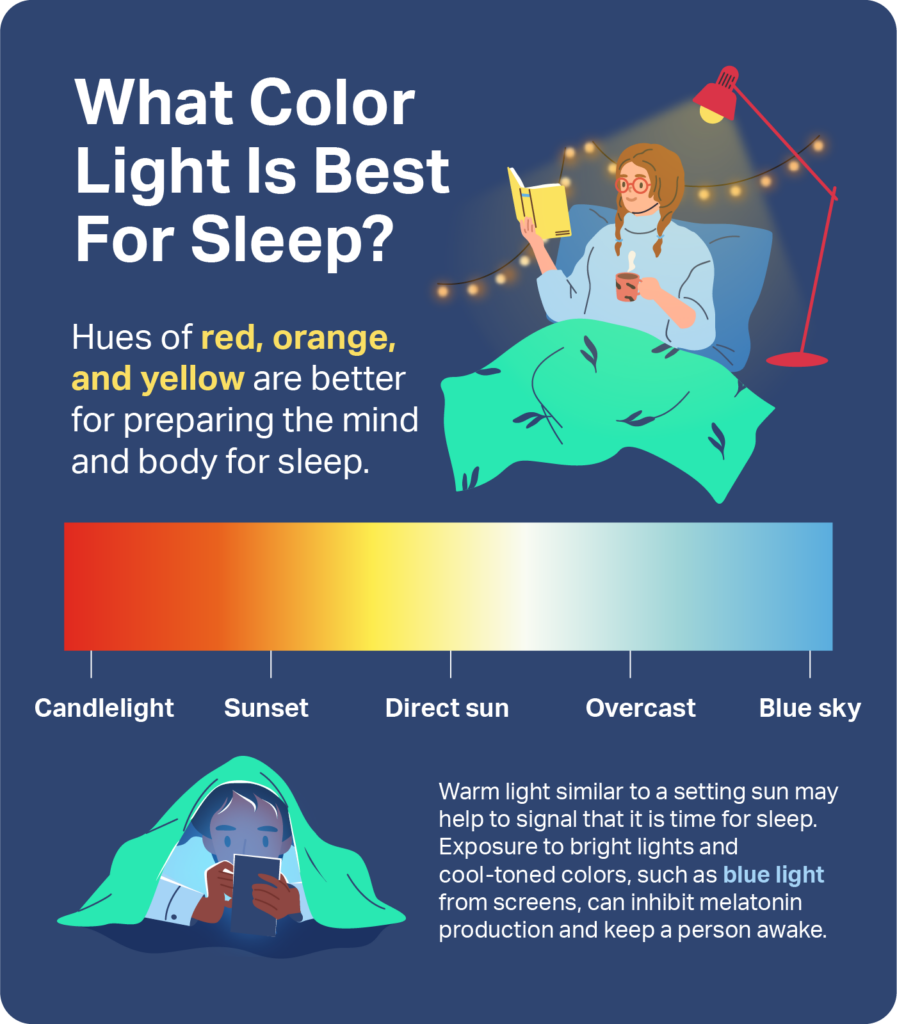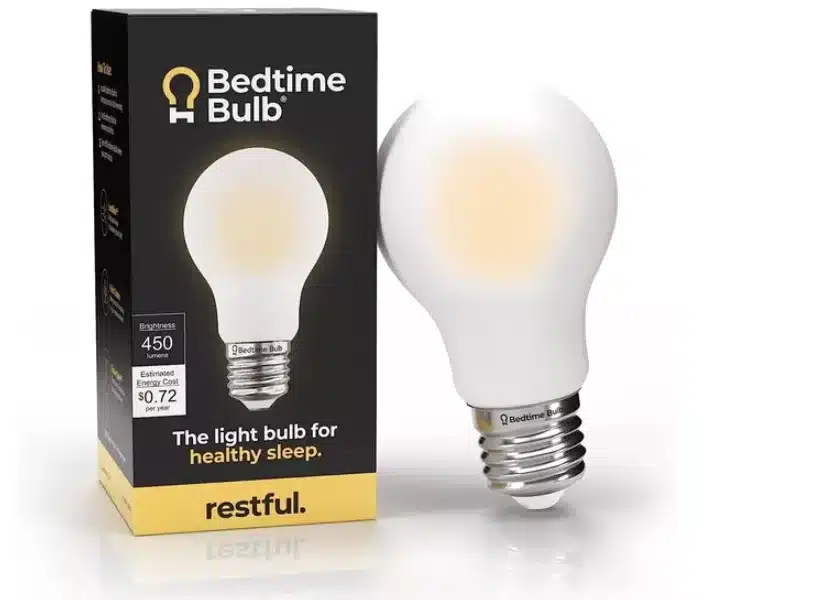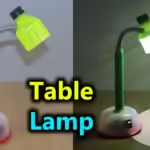Warm, dimmable light bulbs are best for sleep. They reduce blue light exposure, promoting melatonin production.
Choosing the right light bulbs can significantly impact your sleep quality. Exposure to blue light in the evening can interfere with your body’s natural sleep-wake cycle. Opting for warm, dimmable light bulbs helps in creating a relaxing atmosphere conducive to sleep.
These bulbs typically emit a soft, amber glow that mimics natural sunset tones, signaling your body to wind down. They also allow you to adjust the brightness, making it easier to prepare for bedtime. By selecting bulbs with lower color temperatures, you can improve your sleep environment and enhance overall well-being.

Credit: optimizeyourbiology.com
Importance Of Light For Sleep
Light plays a crucial role in our sleep patterns. The type of light you are exposed to can affect your sleep quality. Choosing the right light bulbs can improve your sleep. Let’s explore how light impacts your sleep.
Impact On Circadian Rhythm
Our bodies follow a natural sleep-wake cycle called the circadian rhythm. This cycle is influenced by light and darkness. Exposure to bright light in the evening can disrupt this rhythm. This makes it hard to fall asleep. Using the best light bulbs for sleep can help maintain a healthy circadian rhythm.
Role Of Melatonin
Melatonin is a hormone that regulates sleep. Light exposure affects melatonin production. Bright light can reduce melatonin levels. This delays sleep. Using dim or warm light bulbs in the evening can boost melatonin production. This promotes better sleep quality.
| Light Bulb Type | Impact on Sleep |
|---|---|
| LED | Can disrupt sleep if too bright |
| Incandescent | Generally better for sleep |
| Smart Bulbs | Can be adjusted to optimal levels |
Choosing the best light bulbs for sleep involves understanding their impact on your circadian rhythm and melatonin levels. By doing so, you can improve your sleep quality significantly.
Types Of Light Bulbs
Choosing the right light bulb can improve your sleep. Different types of light bulbs have unique features that can affect your sleep quality. Below, we discuss the two main types: incandescent bulbs and LED bulbs.
Incandescent Bulbs
Incandescent bulbs are the traditional light bulbs. They emit a warm, yellow light. This type of light is soothing and can help prepare your body for sleep. Incandescent bulbs are affordable and easy to find. They have a short lifespan but are very effective in creating a calm atmosphere.
| Feature | Incandescent Bulbs |
|---|---|
| Light Color | Warm Yellow |
| Lifespan | Short |
| Cost | Low |
Led Bulbs
LED bulbs are energy-efficient and last longer. They come in various colors, including warm white, which is best for sleep. LED bulbs can also be dimmable, allowing you to adjust the light intensity. This flexibility helps create a relaxing environment before bedtime.
- Energy-efficient
- Long-lasting
- Dimmable options
- Available in warm white
LED bulbs are a bit more expensive but can save energy costs over time. They are a great investment for improving your sleep environment.
Color Temperature And Sleep
Understanding the color temperature of light can help improve your sleep. Light bulbs come in different colors, measured in Kelvin (K). These colors can affect how well you sleep. Let’s explore the benefits and effects of different color temperatures.
Warm Light Benefits
Warm light has a color temperature of 2,700K to 3,000K. It mimics the natural light of sunset. This type of light is soothing and calming. It helps your body prepare for sleep. Warm light reduces the production of blue light. Blue light can interfere with your sleep by blocking melatonin. Using warm light bulbs in your bedroom can improve sleep quality.
- Soothes and relaxes the mind
- Reduces blue light exposure
- Helps in melatonin production
Cool Light Effects
Cool light has a color temperature of 5,000K to 6,500K. It is similar to daylight at noon. Cool light is energizing and keeps you alert. It is ideal for workspaces and kitchens but not for bedrooms. Using cool light at night can disrupt your sleep cycle. It increases blue light exposure, blocking melatonin production. This makes it harder to fall asleep and stay asleep.
- Energizes and keeps you awake
- Ideal for workspaces, not bedrooms
- Disrupts sleep cycle by blocking melatonin
Top Picks For Warm Light Bulbs
Choosing the right light bulb can improve your sleep quality. Warm light bulbs create a cozy and relaxing atmosphere. They help your body prepare for rest. Here are the top picks for the best warm light bulbs.
Best Incandescent Bulbs
Incandescent bulbs are classic choices. They emit a warm, soothing light. These bulbs are perfect for bedrooms. They provide a gentle glow that helps you unwind.
| Brand | Wattage | Color Temperature |
|---|---|---|
| Philips | 60W | 2700K |
| GE | 40W | 2800K |
| Feit | 75W | 2900K |
Philips 60W incandescent bulb is a great choice. It provides a warm light at 2700K. GE 40W bulb is another option. It has a slightly higher color temperature of 2800K. Feit 75W bulb offers the warmest light at 2900K.
Top Led Options
LED bulbs are energy-efficient. They last longer than incandescent bulbs. They can also produce warm light. Here are the best warm LED bulbs.
- Cree 60W Equivalent Soft White LED Bulb: 2700K
- Philips Hue White Ambiance: 2200K to 6500K adjustable
- GE Relax LED: 2700K
Cree 60W Equivalent Soft White LED Bulb offers a warm light at 2700K. Philips Hue White Ambiance lets you adjust the color temperature from 2200K to 6500K. GE Relax LED provides a constant warm light at 2700K.
Choose these warm light bulbs to create a relaxing bedroom environment. They help improve your sleep quality.
Smart Light Bulbs For Better Sleep
Smart light bulbs are transforming how we sleep. These bulbs provide customizable lighting, helping improve sleep quality. They can simulate natural light patterns, aiding in a better night’s rest.
Customizable Lighting
Smart light bulbs offer customizable lighting options. You can adjust brightness and color temperature. This helps create a relaxing environment before bed.
Some bulbs have presets for reading, relaxing, or sleeping. You can set the light to dim gradually, mimicking a natural sunset.
This gradual change helps signal your body that it is time to sleep. It reduces blue light exposure, which can interfere with sleep.
Integration With Sleep Apps
Many smart light bulbs integrate with popular sleep apps. These apps track your sleep patterns and adjust the lighting accordingly.
For example, the light can gradually brighten to wake you up gently. This mimics a sunrise, making waking up easier and more natural.
Some apps offer personalized recommendations based on your sleep data. This ensures that your lighting is optimized for your unique needs.
Here is a comparison table of popular smart light bulbs and their features:
| Brand | Customizable Lighting | Sleep App Integration |
|---|---|---|
| Philips Hue | Yes | Yes |
| LIFX | Yes | No |
| Sengled Smart | Yes | Yes |
Using smart light bulbs can make a significant difference in sleep quality. Customize your lighting and integrate with sleep apps for better rest.

Credit: www.risescience.com
Dimmable Light Bulbs
Dimmable light bulbs help create a cozy bedtime environment. Adjusting light brightness can make a big difference in sleep quality. Let’s explore the benefits and best choices.
Advantages Of Dimming
- Improves Sleep Quality: Dimming lights before bed helps relax your mind.
- Reduces Eye Strain: Lower light levels reduce eye strain, making it easier to fall asleep.
- Energy Efficient: Dimmable bulbs use less power when dimmed, saving energy and money.
- Customizable Ambiance: Create the perfect mood by adjusting brightness levels.
Best Dimmable Choices
| Brand | Model | Features |
|---|---|---|
| Philips | Hue White | Smart control, warm light, energy-efficient |
| GE | C by GE | Voice control, adjustable color temperature, easy setup |
| Feit Electric | OM60 | Affordable, dimmable, soft white light |
| SYLVANIA | Smart+ | App control, color changing, energy-saving |
Red Light Bulbs For Sleep
Red light bulbs can help you sleep better. They create a calm and soothing environment. This can make it easier to fall asleep. Let’s explore the benefits of red light and some recommended red bulbs.
Benefits Of Red Light
Red light has several benefits for sleep:
- Red light helps regulate your circadian rhythm.
- It reduces blue light exposure, which disrupts sleep.
- Red light creates a calm atmosphere in your bedroom.
Red light doesn’t interfere with melatonin production. Melatonin is the hormone that controls sleep. Using red light bulbs can help you feel more relaxed.
Recommended Red Bulbs
Here are some of the best red light bulbs for sleep:
| Brand | Model | Features |
|---|---|---|
| Philips | Hue White and Color Ambiance | Smart bulb, dimmable, voice control |
| GE | Cync Full Color | WiFi-enabled, adjustable color temperature |
| Sylvania | Smart+ LED Bulb | Bluetooth, energy-efficient |
Each of these bulbs offers unique features. Choose one that fits your needs and preferences.

Credit: www.sleepfoundation.org
Blue Light And Sleep Disruption
Blue light has become a significant concern for sleep quality. Exposure to blue light can disrupt our natural sleep patterns and make it hard to fall asleep. This section explains how blue light affects sleep and ways to reduce its exposure.
How Blue Light Affects Sleep
Blue light impacts the body’s natural sleep-wake cycle. The cycle is also called the circadian rhythm. It is responsible for regulating sleepiness and wakefulness.
Blue light can delay the release of melatonin, a sleep-inducing hormone. Less melatonin makes it hard to fall asleep, and sleep quality suffers.
Electronic devices like smartphones, tablets, and computers emit blue light. Using these devices before bed can lead to sleep disruption. Even LED and fluorescent light bulbs can produce blue light, affecting sleep.
Reducing Blue Light Exposure
There are several ways to reduce blue light exposure and improve sleep quality. Below is a table showing some methods and their effectiveness.
| Method | Effectiveness |
|---|---|
| Use blue light blocking glasses | High |
| Install blue light filter apps | Medium |
| Avoid screens 1-2 hours before bed | High |
| Switch to warm light bulbs | Medium |
Follow these tips to minimize blue light exposure:
- Set a bedtime routine: Turn off screens and relax before sleep.
- Choose warm light bulbs: Opt for bulbs with a color temperature below 3000K.
- Use night mode settings: Enable these on devices to reduce blue light.
- Dim the lights: Keep lights low in the evening to help your body prepare for sleep.
By understanding and reducing blue light exposure, you can improve your sleep quality and wake up refreshed.
Energy Efficiency And Sleep
Energy-efficient light bulbs can help improve your sleep. These bulbs not only save power but also promote better rest. Let’s explore the best options for eco-friendly and cost-effective light bulbs for sleep.
Eco-friendly Options
Choosing eco-friendly bulbs can improve sleep and reduce energy use. Here are some top choices:
- LED Bulbs: These bulbs use less energy and last longer. They emit less blue light, which helps you sleep better.
- Smart Bulbs: You can control the brightness and color. Set them to warmer tones in the evening for better sleep.
- Compact Fluorescent Lamps (CFLs): CFLs use less energy than traditional bulbs. Choose ones with a warm color temperature for sleep.
Cost-effective Choices
Cost-effective bulbs save money and improve sleep quality. Consider these options:
- Standard LED Bulbs: They are affordable and energy-efficient. They also last up to 25,000 hours.
- Discount Packs: Buying bulbs in bulk can save money. Look for packs of LEDs or CFLs with warm light.
- Dimmable Bulbs: These bulbs allow you to adjust brightness. Lower light levels at night can help you sleep.
| Bulb Type | Energy Efficiency | Sleep Quality |
|---|---|---|
| LED | High | Very Good |
| Smart Bulbs | High | Excellent |
| CFLs | Medium | Good |
| Standard LED | High | Very Good |
| Dimmable Bulbs | High | Very Good |
Choosing The Right Wattage
Choosing the right wattage for your bedroom light bulbs can make a significant difference in your sleep quality. The wattage determines the brightness of the bulb, which can either help or hinder your ability to relax and fall asleep. This section will guide you through selecting the optimal wattage for your bedroom to create a sleep-friendly environment.
Optimal Wattage For Bedrooms
For a bedroom, a lower wattage light bulb is ideal. Bright lights can trick your brain into thinking it’s daytime. This makes it harder to fall asleep.
Here are some recommended wattages for bedroom lighting:
- 10-15 watts for a calming, dim light
- 20-40 watts for a moderate brightness
- 60 watts for reading or tasks before bed, but not for sleep
Using dimmable light bulbs can be beneficial. You can adjust the brightness according to your needs.
Energy Consumption Tips
Choosing the right wattage also affects your energy consumption. Lower wattage bulbs use less electricity. This can save you money on your energy bills.
Here are some tips for energy-efficient bedroom lighting:
- Use LED bulbs. They consume less energy than traditional incandescent bulbs.
- Install dimmer switches. This allows you to adjust the brightness and save energy.
- Consider smart bulbs. They can be programmed to turn off automatically, reducing energy waste.
By selecting the right wattage and using energy-saving tips, you can create a bedroom environment that promotes better sleep and is kinder to your wallet.
Light Bulbs For Kids’ Bedrooms
Choosing the right light bulbs for kids’ bedrooms is important. The right light can help children sleep better and feel safe. Not all light bulbs are suitable for kids. Let’s explore the best options for your child’s bedroom.
Safe Options For Children
Safety is the top priority for children’s bedrooms. The light bulbs must be safe and cool to touch.
- LED bulbs: They stay cool and are energy efficient.
- Plastic-coated bulbs: These are shatterproof and safe.
- Smart bulbs: They can be controlled via an app for safe use.
Always choose bulbs with a low wattage. This reduces the risk of overheating. Avoid incandescent bulbs as they get very hot. Safety comes first in a child’s room.
Promoting Good Sleep Habits
Good sleep habits are crucial for a child’s health. Light plays a big role in sleep quality.
| Type of Light | Benefits for Sleep |
|---|---|
| Red or amber light | Does not disrupt melatonin production. |
| Dim lights | Helps create a relaxing environment. |
| Night lights | Provides security without being too bright. |
Use a dimmable LED light for bedtime. This allows for gradual dimming. Gradual dimming helps ease a child into sleep. A soft red or amber light is best for sleep. These colors don’t interfere with melatonin.
Light Bulbs For Nightstands
Choosing the right light bulbs for nightstands can greatly impact your sleep. These bulbs should create a calming atmosphere. They should also provide enough light for reading or other bedtime activities. Here, we explore the best options for nightstand lighting.
Best Nightstand Bulbs
Consider these top picks for nightstand bulbs:
- Philips Hue White Ambiance: Adjustable color temperature and brightness.
- GE Relax LED: Soft white light that reduces blue light exposure.
- Sylvania Ultra Soft White: Energy-efficient with a warm glow.
Ambiance And Functionality
Creating the right ambiance is key for restful sleep. Nightstand bulbs should offer soft, warm light. This type of light helps signal to your body that it’s time to relax.
Here are some features to look for:
| Feature | Benefit |
|---|---|
| Dimmable | Allows you to adjust brightness |
| Color Temperature | Choose bulbs with 2700K-3000K for a warm glow |
| Energy Efficiency | LED bulbs save energy and last longer |
Consider bulbs that can change color temperature. This feature allows you to have bright light for reading and a softer light for winding down.
Smart bulbs are also a great choice. They can be controlled via apps, making it easier to adjust lighting without getting out of bed.
Light Bulbs For Reading Before Bed
Choosing the right light bulbs for reading before bed can improve sleep quality. Certain light bulbs can reduce eye strain and enhance reading comfort. In this section, we will discuss the best options for bedtime reading lights.
Ideal Reading Lights
Ideal reading lights should emit a warm, soft light. This type of light is gentle on the eyes. It creates a relaxing environment conducive to sleep.
- LED bulbs: These bulbs are energy-efficient and last long. Choose LEDs with a color temperature of 2700K to 3000K.
- Incandescent bulbs: They produce a warm, soft light. Incandescents are less energy-efficient but excellent for a cozy atmosphere.
- Halogen bulbs: They are a type of incandescent bulb. Halogens are more energy-efficient and offer a crisp, white light.
Avoiding Eye Strain
To prevent eye strain, ensure the light is not too bright or too dim. Proper lighting can make a significant difference.
- Use a lampshade: A lampshade diffuses light and reduces glare. This makes reading more comfortable.
- Adjustable lamps: Choose lamps with adjustable arms. This allows you to direct light where needed, reducing strain.
- Task lighting: Use task lighting that focuses directly on your reading material. This ensures adequate illumination.
Below is a comparison table for different light bulbs:
| Type of Bulb | Color Temperature | Energy Efficiency | Best For |
|---|---|---|---|
| LED | 2700K – 3000K | High | Energy Saving |
| Incandescent | 2700K | Low | Cozy Atmosphere |
| Halogen | 3000K | Moderate | Crisp Light |
Choosing the right light bulb can make reading before bed enjoyable. It can also promote better sleep by reducing eye strain.
Maintenance And Lifespan
Choosing the best light bulbs for sleep involves considering their maintenance and lifespan. Proper maintenance can extend the life of your light bulbs, ensuring you get the most out of your investment. Below, we explore the longevity of light bulbs and provide easy maintenance tips.
Longevity Of Light Bulbs
Different types of light bulbs have varying lifespans. Here’s a table showing the average lifespan of common bulbs:
| Type of Bulb | Average Lifespan (hours) |
|---|---|
| LED | 25,000 – 50,000 |
| Incandescent | 1,000 – 2,000 |
| Compact Fluorescent (CFL) | 8,000 – 10,000 |
| Halogen | 2,000 – 4,000 |
LED bulbs last the longest, making them ideal for bedrooms. They consume less energy and save money in the long run.
Easy Maintenance Tips
Proper maintenance ensures your light bulbs last as long as possible. Here are some easy tips:
- Clean your bulbs regularly using a soft cloth.
- Turn off lights when not in use to extend their lifespan.
- Use dimmers and timers to control usage and save energy.
- Ensure the bulbs are properly installed and secure in their sockets.
- Avoid frequent switching on and off, especially for incandescent bulbs.
Follow these tips to get the best performance from your light bulbs. The right maintenance helps you enjoy a better sleep environment.
Customer Reviews And Ratings
Choosing the best light bulbs for sleep can be tough. Customer reviews and ratings help make this easier. They offer real-life experiences and honest opinions. Here, we share insights from users about top-rated light bulbs. Let’s dive in!
Top-rated Light Bulbs
| Light Bulb | Average Rating | Key Features |
|---|---|---|
| Philips Hue White Ambiance | 4.7 stars | Adjustable color temperature, Smart control |
| GE Relax HD LED | 4.5 stars | Warm light, Energy-efficient |
| Sylvania Smart+ Soft White | 4.6 stars | Soft white light, Voice control |
| Hatch Restore | 4.8 stars | Sunrise alarm, Guided meditations |
User Experiences
Users love the Philips Hue White Ambiance. They praise its adjustable color temperature. This feature helps set the right mood for sleep. Smart control is another big plus. People control the light from their phones.
The GE Relax HD LED is also popular. Users mention its warm light. This helps create a cozy environment. The bulb is also energy-efficient. This saves money on electricity bills.
Sylvania Smart+ Soft White has great reviews as well. Users like its soft white light. They also enjoy the voice control feature. This makes it easy to adjust the light without moving.
Finally, the Hatch Restore gets high marks. People love its sunrise alarm feature. This helps them wake up naturally. The guided meditations are also a hit. Users find them relaxing before bed.
Frequently Asked Questions
What Light Bulb Is Good For Sleep?
Warm light bulbs around 2700K to 3000K promote better sleep. Use dimmable LED bulbs to create a relaxing atmosphere.
What Light Color Is Best For Sleep?
Soft, warm light is best for sleep. Colors like red, orange, or yellow help create a relaxing atmosphere. Avoid blue light.
What Color Is Best For Night Light Bulb?
The best color for a night light bulb is red. Red light promotes better sleep and minimizes disturbances.
What Light Bulbs Are Best For Bedtime Reading?
Warm, dimmable LED bulbs are best for bedtime reading. They reduce eye strain and help maintain a relaxing environment. Choose bulbs with a color temperature of 2700K or lower.
What Are The Best Light Bulbs For Sleep?
Warm-colored bulbs are best for sleep. They mimic natural evening light.
Do Light Bulbs Affect Sleep Quality?
Yes, light bulbs with blue light can disrupt sleep. Warm light is better.
Are Led Bulbs Good For Sleep?
Yes, but choose warm-colored LEDs. They help maintain melatonin levels.
What Color Light Helps You Sleep?
Red or warm yellow light helps you sleep. It mimics sunset.
How Bright Should Bedroom Lights Be?
Bedroom lights should be dim. Bright lights can interfere with sleep.
Can Smart Bulbs Improve Sleep?
Yes, smart bulbs can adjust light color and intensity. This helps create a sleep-friendly environment.
Conclusion
Choosing the right light bulb can improve your sleep quality. Opt for bulbs with warm, soft light. Avoid blue light exposure before bedtime. Prioritize your sleep environment for better rest. Explore different options to find what works best for you.
Sleep well with the perfect light bulb.



